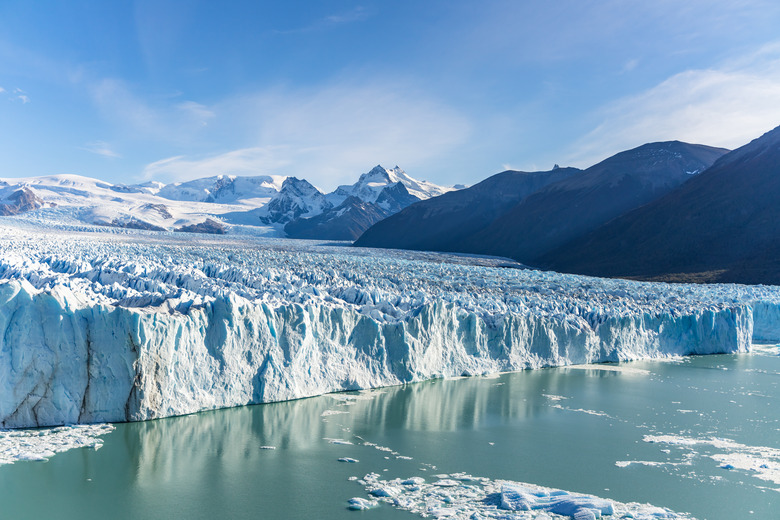The World's Scariest Glacier Just Got More Terrifying
An unstable glacier the size of Florida is at danger of melting into the ocean at a rate way faster than expected, an event that could lead to dangerously high sea levels in the years to come.
A new NASA-funded study took a look at the instability of Antarctica's Thwaites Glacier and found some bad news: The glacier is becoming increasingly unstable. Glaciers have been melting for a while, but not at this rate. In the 1980s, the Thwaites lost about 40 billion tons of ice per year.
The past few years? That number skyrocketed to 252 billion tons per year.
Scientists fear that as the climate crisis continues, the Thwaites could hit a point of no return – essentially a point where melting could not be reversed, even if temperatures stop rising. (And as a not-so-gentle reminder: No one is expecting temperatures to just stop rising).
Why This Glacier In Particular?
Why This Glacier In Particular?
Scientists have kept their eyes on Thwaites Glacier for years now, despite the difficulty in doing so. The massive hunk of ice is remote (even by Antarctica standards), difficult to get to and plagued by bad weather. But in recent years, glacier experts have made the long trek to the place dubbed "The World's Most Terrifying Glacier."
It's not just the remoteness that makes it dangerous. It's also because of its potential to raise sea levels worldwide.
The consequences of a total melt of the Thwaites Glacier would be devastating to global sea levels. When sea ice melts, there are environmental consequences, but since it's already in the sea, it does not contribute to rising sea levels. But a total melt of the Thwaites Glacier would include the melting of land ice, which has the potential to raise sea levels by more than 1.5 feet.
Additionally, that could trigger the melting of other glaciers, which could raise sea levels by another (terrifying!) 8 feet.
I Know Rising Sea Levels are Bad, but ... Remind Me Why Again?
I Know Rising Sea Levels are Bad, but ... Remind Me Why Again?
Rising sea levels are a huge risk for coastal cities around the world. Places like New York, Boston, New Orleans, Miami, Hong Kong, Jakarta, Tokyo and Venice were built right into the coasts without any anticipation of rising sea levels.
In addition to having to weather storms caused or made more severe by climate change, rising sea levels could sink or damage coastal infrastructure like power lines, highways, ports, sanitation and drinking pipelines and rail lines. In other areas, the encroaching sea can completely ruin farmland, depleting people of their livelihoods and food sources. Places like the Maldives are taking measures so they don't entirely disappear, and millions of people could be displaced. It's as good a time as ever to hop on the phone and give your representatives a call about making climate change one of their top priorities.
Cite This Article
MLA
Dragani, Rachelle. "The World's Scariest Glacier Just Got More Terrifying" sciencing.com, https://www.sciencing.com/the-worlds-scariest-glacier-just-got-more-terrifying-13720157/. 19 July 2019.
APA
Dragani, Rachelle. (2019, July 19). The World's Scariest Glacier Just Got More Terrifying. sciencing.com. Retrieved from https://www.sciencing.com/the-worlds-scariest-glacier-just-got-more-terrifying-13720157/
Chicago
Dragani, Rachelle. The World's Scariest Glacier Just Got More Terrifying last modified March 24, 2022. https://www.sciencing.com/the-worlds-scariest-glacier-just-got-more-terrifying-13720157/
